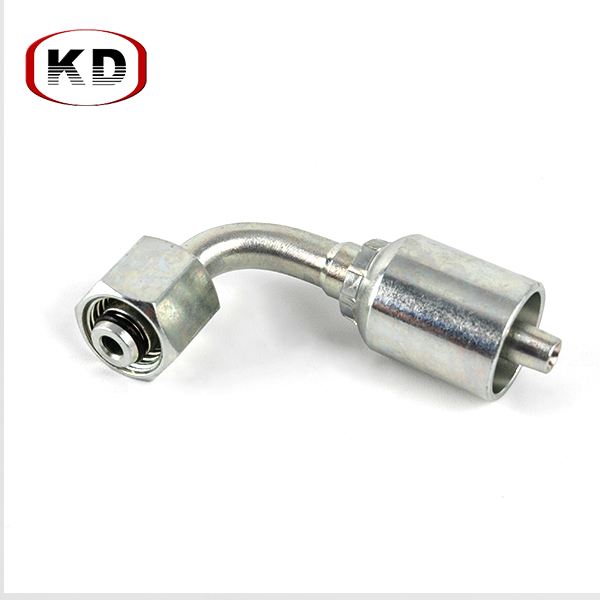Selecting and using
Hydraulic Hose Fittings is critical to ensure the safe and efficient operation of these systems. Hoses are used to transmit hydraulic fluid under pressure from one component to another, and their proper selection is essential to prevent leaks, system failures, and maintenance issues.
Fluid Compatibility: Ensure that the hose material is compatible with the type of hydraulic fluid being used. Hydraulic fluids can vary, so select hoses specifically designed for the fluid in your system. Common fluids include oil-based, water-based, or synthetic hydraulic fluids.
Pressure Rating: Hoses have maximum pressure ratings, and it's crucial to choose a hose that can handle the maximum pressure of your hydraulic system. The pressure rating should be higher than the maximum operating pressure of the system to provide a safety margin.
Size and Length: Select the appropriate hose diameter and length based on the flow rate and distance between hydraulic components. Using a hose that is too small can lead to excessive pressure drop and reduced system efficiency, while a hose that is too long may result in added fluid friction and heat.
Temperature Range: Consider the operating temperature range of the hydraulic system and choose hoses that can withstand these conditions. Using hoses outside their specified temperature range can lead to premature failure.
Abrasion Resistance: If hoses are exposed to abrasion from surrounding equipment or environments, consider hoses with extra abrasion-resistant covers or protective sleeves.
Bend Radius: Ensure that the hose can bend without kinking or collapsing. The minimum bend radius is specified by the manufacturer and should not be exceeded.
Flexibility: Hoses should be flexible enough to accommodate system movements or vibrations without causing damage.
End Fittings: Select the appropriate end fittings that match the hose and system components. Common end fittings include JIC, NPT, and SAE connections. Make sure they are properly sealed to prevent leaks.
Suction or Return Lines: For hoses used in suction or return lines, consider wire reinforcement or hose designs suitable for low-pressure applications.
Installation and Routing: Properly install and route the hoses to minimize sharp bends, twists, and potential damage. Secure hoses away from hot surfaces, moving parts, and potential sources of abrasion.
Inspection and Maintenance: Regularly inspect hoses for signs of wear, damage, or leakage. Replace any damaged hoses promptly. Implement a maintenance schedule to ensure the longevity of the hoses and the reliability of the hydraulic system.
 Metic 24°Female One Piece Hose Fitting
Metic 24°Female One Piece Hose Fitting
- The founder is the first group in China engaged in the production and development of hydraulic hose joints and hydraulic transition joints
- The company provides the best solutions to construction machinery leading enterprises Zoomlion Heavy Industry, Xugong, Sanhe Intelligent and injection molding machine leading enterprises Yizhi
- Strictly follow the ISO quality system to ensure "quality first, prevent any defective products from flowing out"
 By Admin
By Admin
